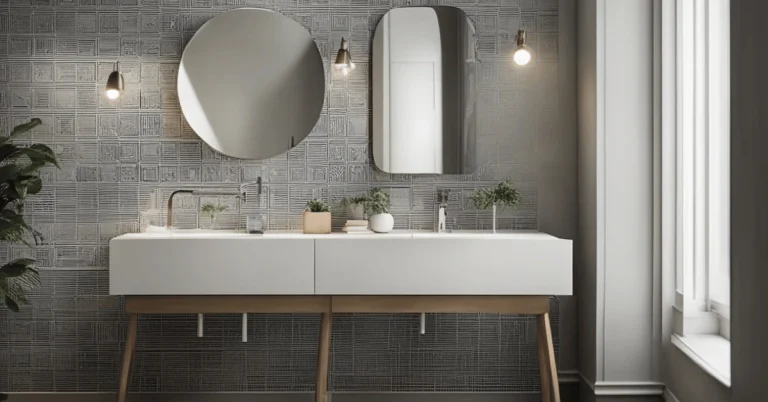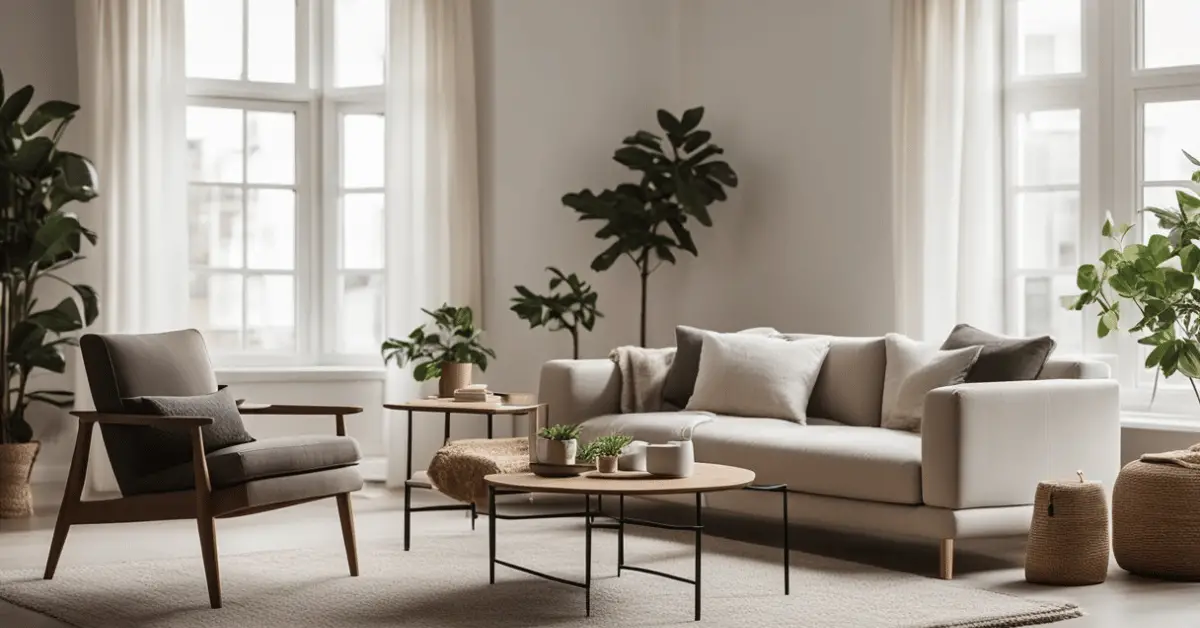Discover the essence of simplicity in architecture with our guide to Minimalist Architecture. Uncover the principles, renowned architects, and timeless designs that embrace the beauty of less. Let’s dive together into the world of minimalist architecture and learn how to create spaces that inspire tranquility and functionality.
Origins of Minimalist Architecture
Minimalist architecture has its roots in various art movements that emerged in the early 20th century. One of the most significant of these movements was De Stijl, which originated in the Netherlands in 1917. De Stijl, which translates to “The Style” in English, was a response to the chaos and destruction of World War I. Its proponents sought to create a new form of art that was simple, rational, and harmonious.
Another important influence on minimalist architecture was the Bauhaus school, which was founded in Germany in 1919. The Bauhaus sought to combine art and technology in a way that would benefit society as a whole. Its emphasis on functionality and simplicity had a profound impact on modern architecture.
Ludwig Mies van der Rohe, a prominent member of the Bauhaus, is often credited with developing the minimalist aesthetic in architecture. His famous dictum, “less is more,” encapsulated the minimalist philosophy in a nutshell. Mies van der Rohe’s work was characterized by clean lines, simple forms, and the use of industrial materials such as steel and glass.
The post-World War II period saw minimalist architecture gain wider acceptance, particularly in the United States. Architects such as Frank Stella and Richard Meier embraced the minimalist aesthetic, creating buildings that were characterized by their simplicity and lack of ornamentation.
Minimalism was not just a reaction to the chaos of the early 20th century; it also drew on older philosophical traditions. Ralph Waldo Emerson and Henry David Thoreau, for example, emphasized the importance of simplicity and self-reliance in their writings. Thoreau’s book “Walden,” in particular, has been cited as a major influence on the minimalist movement.
Finally, it is worth noting that minimalist architecture has been strongly influenced by Japanese culture. The Japanese aesthetic of wabi-sabi, which emphasizes the beauty of imperfection and impermanence, has been a major influence on the minimalist movement. Japanese Zen Buddhism, with its emphasis on simplicity and harmony, has also played a role in shaping the minimalist aesthetic.
Key Principles of Minimalist Architecture

Minimalist architecture is guided by several core principles that focus on simplicity, clarity, and efficient use of materials. In this section, we will explore the key principles of minimalist architecture.
Form and Function
At the heart of minimalist architecture is the principle of form and function. We believe that buildings should be designed to serve their intended purpose, without any unnecessary embellishments or ornamentation. This means that the form of the building should be dictated by its function, and that every element of the building should serve a specific purpose.
Simplicity and Clarity
Simplicity and clarity are two of the most important principles of minimalist architecture. We believe that buildings should be designed to be as simple and uncluttered as possible, with a focus on essentials. This often means using a limited color palette, unadorned surfaces, and pure geometric forms.
Material Use
Minimalist architecture places a strong emphasis on the efficient use of materials. We believe that buildings should be constructed using simple materials such as concrete, steel, stone, glass, and wood. These materials are chosen for their durability, efficiency, and sustainability.
When selecting materials, we consider the environmental impact of each material, as well as its aesthetic qualities. We believe that the materials used in a building should be chosen for their ability to enhance the overall design and function of the building.
Influence of Japanese Aesthetics
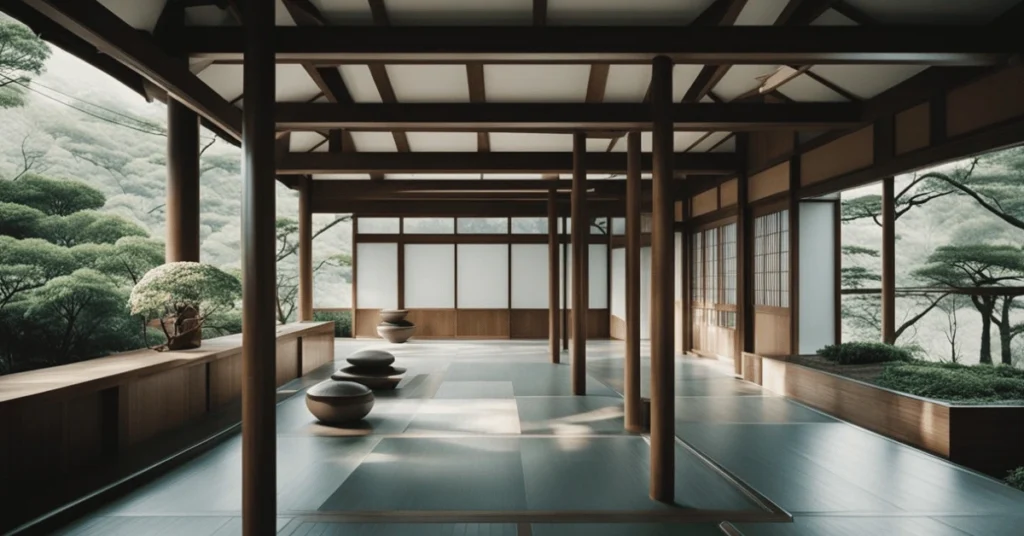
Japanese aesthetics have had a profound impact on minimalist architecture. The Zen philosophy, wabi-sabi, and seijaku are just a few of the Japanese concepts that have influenced this design movement.
Zen Philosophy
The Zen philosophy, which emphasizes simplicity and the beauty of imperfection, has played a significant role in minimalist architecture. The idea of creating a space that is both functional and aesthetically pleasing is at the core of this design movement. Zen gardens, with their carefully arranged rocks and sand, are a perfect example of this philosophy in action. The use of natural materials such as wood and stone, as well as the incorporation of natural light, are also common features of minimalist architecture.
Wabi-Sabi and Seijaku
Wabi-sabi and seijaku are two other Japanese concepts that have influenced minimalist architecture. Wabi-sabi is the art of finding beauty in imperfection, and seijaku is the art of finding beauty in silence. Both of these concepts emphasize the importance of simplicity and the beauty of natural materials. In minimalist architecture, this translates into the use of raw materials such as concrete and wood, as well as the incorporation of natural light and space.
Japanese architecture has also been a significant influence on minimalist design. The Okinawa House and Wabi House are two examples of Japanese architecture that have inspired minimalist architects. These houses incorporate traditional Japanese design elements such as sliding doors and tatami mats, while also emphasizing simplicity and functionality.
Overall, Japanese culture has had a significant impact on minimalist architecture. The use of natural materials, the incorporation of natural light, and the emphasis on simplicity and functionality are all hallmarks of this design movement. By incorporating these Japanese concepts into their designs, minimalist architects have created spaces that are both beautiful and functional.
Notable Minimalist Architects and Their Works
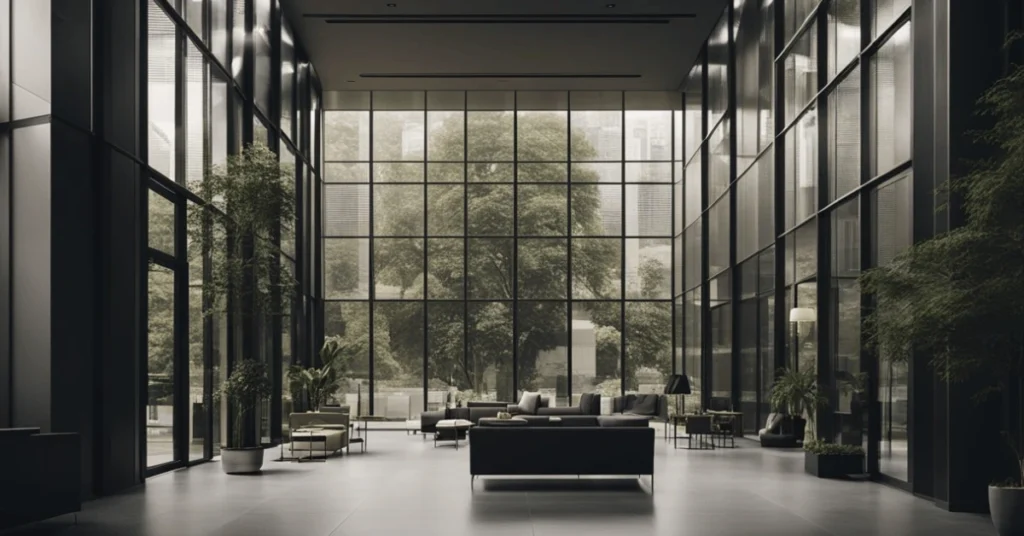
Minimalist architecture has been popular for decades and has inspired many architects to create beautiful, simple designs. Here are a few notable minimalist architects and their works:
Ludwig Mies Van Der Rohe
As mentioned before, Ludwig Mies Van Der Rohe is one of the most famous architects of the 20th century and is often considered the father of modern architecture. He was known for his minimalist designs that focused on clean lines and a simple color palette. One of his most famous works is the Barcelona Pavilion, which was built for the 1929 International Exposition in Barcelona, Spain. The pavilion is a perfect example of minimalist architecture, with its simple design, use of glass and steel, and lack of ornamentation.
Tadao Ando
Tadao Ando is a Japanese architect who is known for his minimalist designs that often incorporate elements of Japanese culture. One of his most famous works is the Church of the Light, which is located in Ibaraki, Japan. The church is a simple, rectangular building that is made of concrete and features a cross-shaped opening in one of the walls that allows natural light to enter the space.
John Pawson
John Pawson is a British architect who is known for his minimalist designs that focus on simplicity and functionality. One of his most famous works is the Novy Dvur Monastery, which is located in the Czech Republic. The monastery is a beautiful example of minimalist architecture, with its simple design, use of natural materials, and focus on creating a peaceful and meditative space.
These architects and their works are just a few examples of the many talented designers who have contributed to the minimalist architecture movement. Other notable works in this style include the Therme Vals in Switzerland, designed by Peter Zumthor, and the House in Plum Grove by Tadao Ando. Overall, minimalist architecture continues to be a popular and influential design style that is appreciated for its simplicity, functionality, and beauty.
Minimalist Architecture in Interior Design
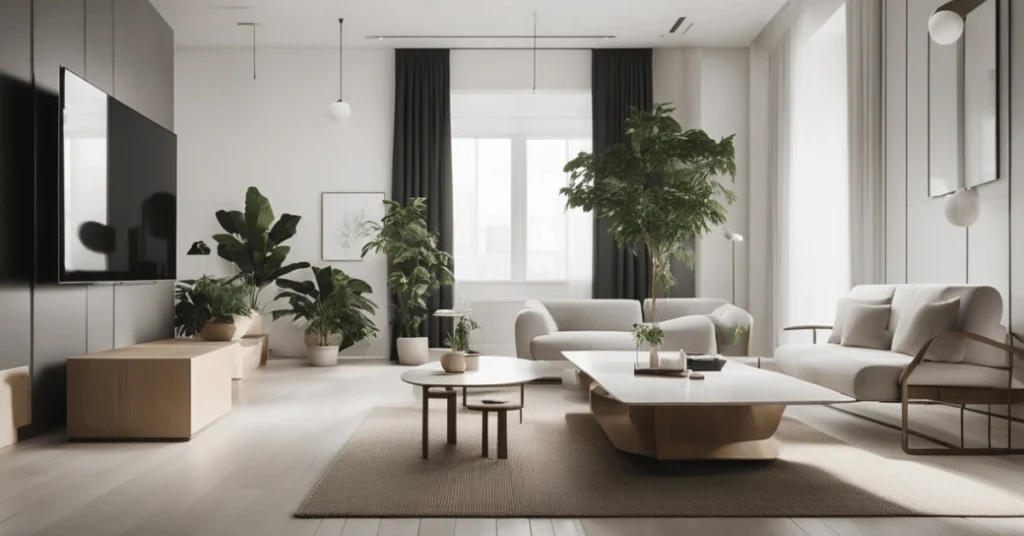
Within interior design, minimalist architecture is characterized by the use of simple and clean lines, a monochromatic palette, and an emphasis on open spaces and negative space. This style of interior design aims to create a sense of calm and serenity by removing any unnecessary details and focusing on the essential elements of a space.
Furniture Design
Furniture design in minimalist architecture is all about simplicity and functionality. Furniture pieces are often designed with clean lines and flat surfaces, and are typically made from natural materials such as wood, leather, or metal. The focus is on quality over quantity, with only a few carefully selected pieces of furniture used to create a sense of balance and harmony in a space.
Color and Lighting
Color and lighting play a crucial role in minimalist architecture. The use of a monochromatic palette, typically consisting of shades of white, gray, and black, helps to create a sense of calm and simplicity. Lighting is also important, with natural light preferred over artificial light sources. Large windows and open floor plans are often used to maximize the amount of natural light that enters a space.
Minimalist Architecture Today

Minimalist architecture is a design philosophy that aims to reduce visual clutter and noise by stripping a structure down to its bare minimum. Today, minimalist architecture is still a popular choice for many architects and homeowners who seek a unique and contemporary design.
Contemporary Architecture
Contemporary architecture often incorporates minimalist design elements, such as the use of industrial materials, open spaces, and a focus on simplicity. This approach creates a clean and modern aesthetic that is both functional and visually appealing.
One of the benefits of minimalist architecture is its ability to reinterpret traditional design elements in a new and unique way. For example, black paintings by Donald Judd have inspired architects to use black as a focal point in their designs, creating a striking contrast against white walls and floors.
Another key aspect of minimalist architecture is its emphasis on decluttering. By removing unnecessary elements, minimalist architecture creates a sense of openness and simplicity that is conducive to simple living.
Scandinavian Design
Scandinavian design is a subcategory of minimalist architecture that originates from the Nordic countries. It is characterized by its use of natural materials, such as wood and stone, and its focus on functionality.
Scandinavian design is often associated with the concept of hygge, which is a Danish word that describes a feeling of coziness and contentment. This concept is reflected in the design of many Scandinavian homes, which often feature warm and inviting spaces that are both functional and aesthetically pleasing.
FAQ
What are the key principles of minimalist architecture?
Minimalist architecture is characterized by simplicity, functionality, and the use of clean lines and geometric shapes. Key principles include the idea that less is more, the use of natural materials, and a focus on creating a sense of calm and tranquility.
What are some famous examples of minimalist architecture?
Famous examples of minimalist architecture include the Barcelona Pavilion by Ludwig Mies van der Rohe, the Glass House by Philip Johnson, and the Farnsworth House by Mies van der Rohe.
How has minimalist architecture evolved over time?
Minimalist architecture has evolved over time, with new materials and technologies allowing for more experimentation and innovation. While early minimalist architects focused on simplicity and functionality, contemporary minimalist architects often incorporate elements of sustainability and environmental responsibility into their designs.
What distinguishes minimalist architecture from other styles?
What distinguishes minimalist architecture from other styles is its focus on simplicity and functionality. Minimalist architecture often features clean lines, geometric shapes, and a limited color palette. It also often incorporates natural materials and a focus on creating a sense of calm and tranquility.
What are some common criticisms of minimalist architecture?
Common criticisms of minimalist architecture include that it can be too sterile or cold, and that it can lack character or personality. Some argue that minimalist architecture can also be too focused on form over function, leading to impractical or uncomfortable living spaces.
How does minimalist architecture impact interior design?
Minimalist architecture has a significant impact on interior design, with many minimalist buildings featuring open floor plans, minimal furniture, and a focus on natural light and the surrounding environment. This often translates into minimalist interior design, with a focus on simplicity, functionality, and the use of natural materials.
We’ve explored the world of minimalist architecture, delving into its origins, key principles, and the profound influence of Japanese aesthetics. Now, we’d love to hear from you! Have you incorporated minimalist design elements into your living spaces? Do you have any favorite minimalist architects or works that inspire you? Share your thoughts, questions, or personal experiences in the comments section below. Your insights contribute to the ongoing conversation about this captivating design philosophy.



